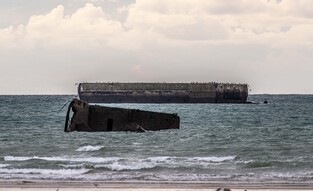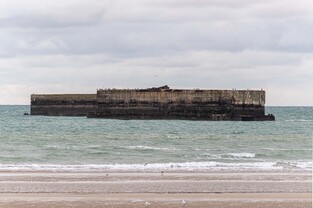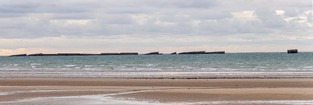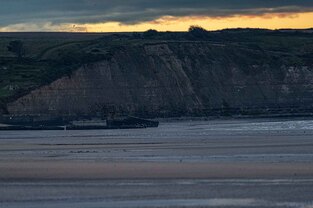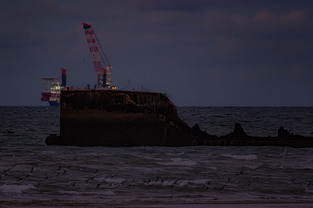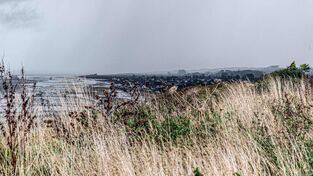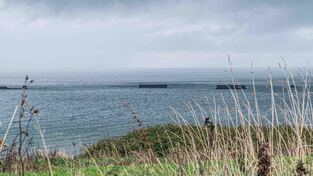- Home
- About The Project
- About The Author
- Latest additions to the project
- Operation BULBASKET
- Oradour-Sur-Glane Massacre 10 June 1944
- British Normandy Memorial
- John Northend - The Inspiration
- Lancaster W4192 "QR-E" 61 Squadron RAF
- The Cemeteries; UK, Ireland and European mini-tour
- Aarestrup Kirke, Denmark
- Aarestrup Kirke - Loss of Liberator KH410
- Aarhus Vestre Cemetery, Denmark
- Arnhem Oosterbeek Cemetery, Holland
- Basingstoke, Wortley Road Cemetery
- Bayeux War Cemetery, France
- Church Of Ireland Churchyard, Belturbet, Republic of Ireland
- Bergen-Op-Zoom, Netherlands
- Bretteville-sur-Laize Canadian War Cemetery
- Brookwood Military Cemeteries
- Cambridge American Cemetery
- Cranwell, St Andrews Parish Church
- D-Day Gold Beach - Remnants of Mulberry Harbour
- Deutsche Soldatenfriedhof, Cannock Chase
- Deutsche Soldatendfriedhof La Cambe, Normandy
- Dunkirk Town Cemetery, France
- Enniskillen Roman Catholic Cemetery
- Escoublac-La Baule War Cemetery St Nazaire
- HAMEL MILITARY CEMETERY, Somme Department, Northern France
- Harefield St Mary's ANZAC Cemetery
- Royal Victoria Hospital Netley and Military Cemetery, Southampton
- Nijmegen Jonkerbos War Cemetery
- Northwood Cemetery
- Odense Assistens Cemetery, Denmark
- Poperinghe New Military Cemetery, Belgium
- Ranville Churchyard, France
- Ration Farm Cemetery, Chapelle D'Armentieres, France
- Reichswald British War Cemetery, Germany
- Runnymede Commonwealth Air Forces Memorial
- Scopwick Burial Ground, Scopwick, Lincolnshire
- Sleaford Cemetery
- Sainte Marè Église
- CWGC Eyes On, Hands On Volunteer Programme
- Biography Flight Sergeant Eleanor Maud Barker WAAF
- Biography Commandant Roger Baudoin French Foreign Legion
- Biography Trooper George Sydney Herbert Biffin B Sqn 1 SAS
- Biography Lance Sergeant Charles Frederick Bristow GM RE
- Biography Lt HD Brotheridge Ox & Bucks Light Infantry
- Biography L/Cpl William Harold Coltman VC DCM* MM*
- Biography Lieutenant W H England No 48 RM Commando
- Buffalo LVT 'Conqueror' destroyed at Walcheren.
- Biography Pilot Officer Emil Fechtner RAF (Czech)
- Biography Private Oswald Fisher 2nd RM Bn, RN Division, RMLI 1916
- Biography Lt Col J G Fitzmaurice MC Royal Tank Regiment
- Biography Flight Sergeant Josef František DFM* RAF
- Biography Sergeant Pietro Alfredo Giovetti RAFVR
- Biography Lieutenant John Grayburn VC, 2 Para
- Biography Lt Cdr Nicodeme Guilonard Netherlands Navy
- Biography Major The Viscount Arthur Onslow Edward Guinness, Viscount Elveden.
- Biography Captain PH Haydon DSO No. 41 RM Commando
- Biography Private Owen Hooper, The Buffs & 4 Commando
- Biography Lieutenant Joseph Patrick Kennedy Jr. US Navy
- Biography Oberstleutnant Walter Koch, Kommandeur Fällschirmjaeger-Regiment 5
- Biography Flight Lieutenant DSA Lord VC RAF
- Biography Major Robert Reid Maitland MB CHB RAMC
- Biography Wg Cdr Jaroslav Maly RAF
- Biography Lieutenant Colonel William McDowell DSO BSc RE
- Biography Flying Officer Geoff Adrian Mombrun RAFVR
- Biography Marine Byron Moses No. 41 RM Commando
- Biography Flying Officer J E Northend RAFVR
- Biography Group Captain 'Bobby' Oxspring DFC** AFC RAF
- Biography FO Ludwik Witold Paszkiewicz DFC RAF
- Biography Lieutenant HE 'Jimmy' Pearson MC The Reconnaissance Corps
- Biography Rifleman Frank Pennefather, 3rd NZ Rifle Brigade
- Biography Sergeant Robert John "Jack" Preece, 61 Squadron RAF.
- Biography Lieutenant John Richard Priestley The Rifle Brigade
- Biography Staff Sjt Christopher Robinson Glider Pilot Regt., AAC
- Biography Sepoy Mahrup (Mahruf) Shah 129th Duke of Connaught's Own Baluchis
- Biography Flying Officer Burrell AT Soundy RNZAF
- Biography Private James Stokes VC 2nd Bn KSLI
- Biography Lieutenant Colonel Leon Robert ‘Bob’ Vance, US Army Air Force
- Taking Chance. The importance of remembrance.
- Useful Links- Museums and Websites
- MA FINAL PROJECT
D-Day Gold Beach - Arrowmanches - Remnants of Mulberry Harbour
Mulberry Harbour was the marvellous invention which consisted of pre-cast concrete sections which were towed across the English Channel to Normandy, then bolted together to create artifical harbours to allow allied ships to offload vehicles, artillery, and supplies at speed to reionforce and supply the Allied bridgehead established on D-Day, 6th June 1944.
The Allies took around 10,250 casualties on D-Day (including the Britsh 6th Airborne Division's casualties on Op TONGA), of whom around 4,400 were killed in action; one of the aspects we remember on the anniversary of D-Day, the scale of sacrifice made to liberate Europe.

